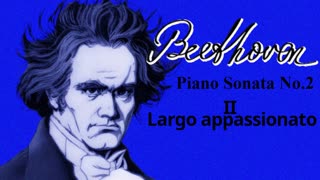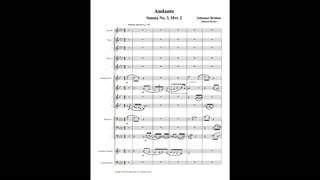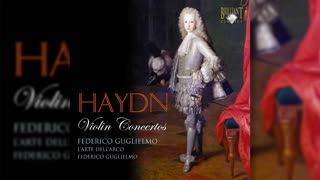Variations on a Theme by Paganini Op.35 - Johannes Brahms 'Bradley-Fulgoni - Piano'
Composition Year: 1862–63
First Performance: 1865-11-25 Zürich: Johannes Brahms, piano
Performers: Peter Bradley-Fulgoni - Piano
Recorded: 1996
~
00:01 - Heft I:
1. Thema. Non troppo Presto
2. Variation 1
3. Variation 2
4. Variation 3
5. Variation 4
6. Variation 5
7. Variation 6
8. Variation 7
9. Variation 8
10. Variation 9
11. Variation 10
12. Variation 11. Andante
13. Variation 12.
14. Variation 13.
15. Variation 14. Allegro
~
14:08 - Heft II
16. Thema. Non troppo Presto
17. Variation 1
18. Variation 2. Poco Animato
19. Variation 3
20. Variation 4. Poco Allegretto
21. Variation 5
22. Variation 6. Poco più vivace
23. Variation 7
24. Variation 8. Allegro
25. Variation 9
26. Variation 10. Veloce, energico
27. Variation 11. Vivace
28. Variation 12. Un poco Andante
29. Variation 13. Un poco più Andante
~
Work:
Variations on a Theme of Paganini, Op. 35, is a work for piano composed in 1863 by Johannes Brahms, based on the Caprice No. 24 in A minor by Niccolò Paganini.
Brahms intended the work to be more than simply a set of theme and variations; each variation also has the characteristic of a study. He published it as Studies for Pianoforte: Variations on a Theme of Paganini. The work was dedicated to the piano virtuoso Carl Tausig.
~
It is well known for its harmonic depth and extreme physical difficulty. A particular emphasis of the technical challenges lie on hand independence, with the left hand often mirroring the right hand throughout the piece or having its own set of obstacles.
~
David Dubal describes it as "a legend in the piano literature," and "fiendish," "one of the most subtly difficult works in the literature." Clara Schumann called it Hexenvariationen (Witch's Variations) because of its difficulty. Dubal quotes critic James Huneker:
~
“Brahms and Paganini! Was ever so strange a couple in harness? Caliban and Ariel, Jove and Puck. The stolid German, the vibratile Italian! Yet fantasy wins, even if brewed in a homely Teutonic kettle ... These diabolical variations, the last word in the technical literature of the piano, are also vast spiritual problems. To play them requires fingers of steel, a heart of burning lava and the courage of a lion.”
~
The work consists of two books. Each book opens with the theme, Paganini's Caprice No. 24 in A minor, followed by fourteen variations. The final variation in each section is virtuosic and climactic.
~
Wikipedia biography: https://bit.ly/3kbFPC0
~
ATTRIBUTION
Music contained in this video is licensed under: Creative Commons Attribution Non-commercial No Derivatives 4.0 / Peter Bradley-Fulgoni
-
 17:04
17:04
Classical Music P.D.
1 year agoVariations on a Theme by Robert Schumann, Op.9 - Johannes Brahms 'Hardy Rittner - Piano'
13 -
 24:23
24:23
Classical Music P.D.
1 year agoVariations and Fugue on a Theme by Handel, Op.24 (Piano) - Johannes Brahms 'Martha Goldstein'
51 -
 5:50
5:50
Afrikitty
5 months agoLudwig van Beethoven - Piano Sonata No 14 in C# Minor Op. 27, No. 2 - 1st Movement MOONLIGHT SONATA
1.94K24 -
 1:08:01
1:08:01
Cyrus Saladin Ming
1 year ago $0.01 earned(4 of 6) Self Goal Refresh 6 Beethoven Sonatas: Appassionata, Les Adieux, Moonlight, Pathetique
61 -
 2:06:50
2:06:50
Born Again Prayer Warrior Agenda / BAPWA
8 months agoJohann Sebastian Bach - Classical Baroque Music - 8 Violin Concertos - ITS Philharmonic Orchestra
952 -
 20:47
20:47
COMO OUVIR MÚSICA
10 months agoLudwig van Beethoven - Sonata para Piano No. 2 em Lá maior, Op. 2, No. 2
7 -
 14:26
14:26
COMO OUVIR MÚSICA
10 months agoLudwig van Beethoven - Sonata para Piano No. 1 in Fá menor, Op. 2 No. 1
9 -
 9:55
9:55
byrnesmusic
4 months agoJohannes Brahms – Andante, Op. 5 (Woodwind Choir)
19 -
 58:47
58:47
CTIPIANOARRANGEMENTS
11 months ago1 HOUR FinalAscend Piano SPACE COVER | NoTimeToDie score by Hans Zimmer
38 -
 59:04
59:04
Born Again Prayer Warrior Agenda / BAPWA
8 months agoFRANZ JOSEPH HAYDN - Violin Concertos
45